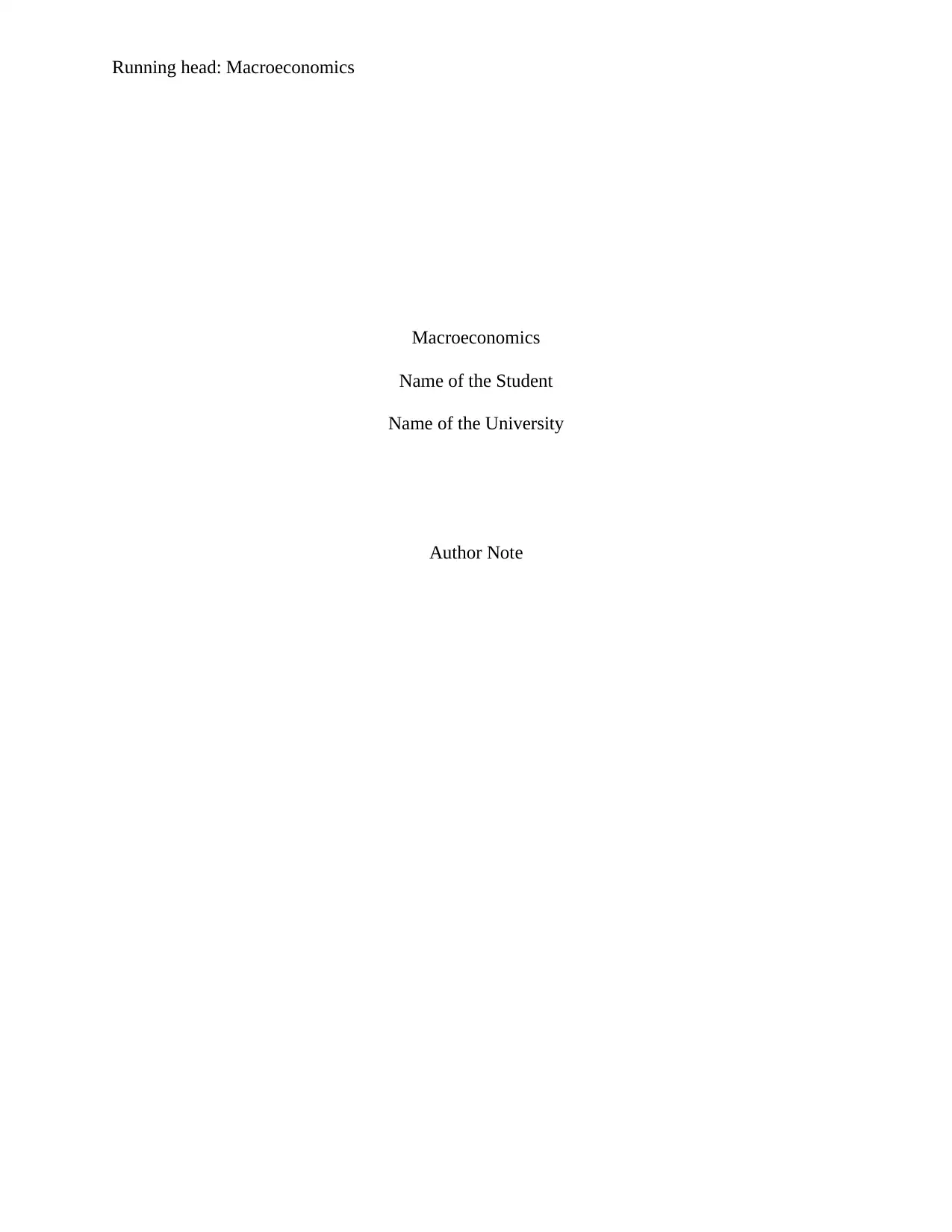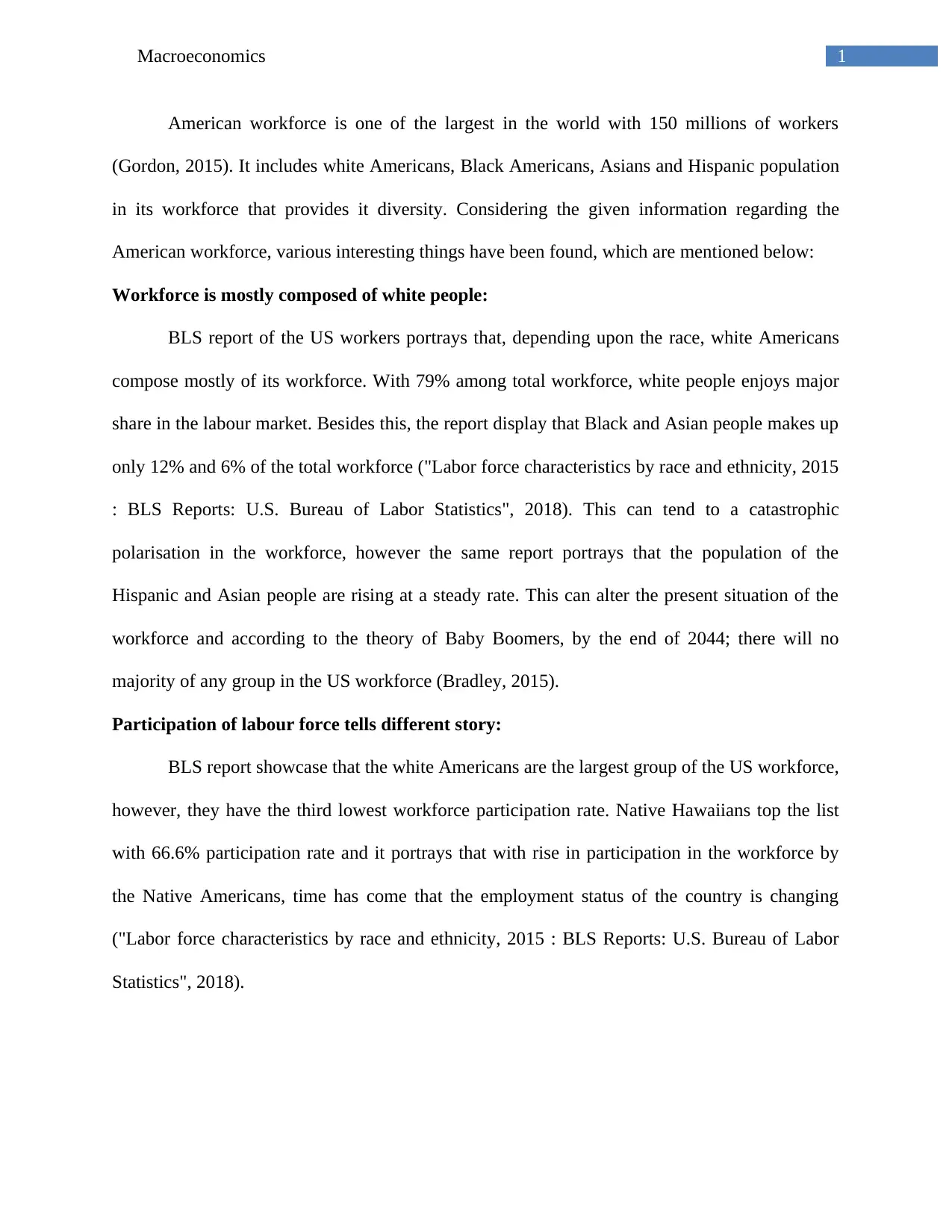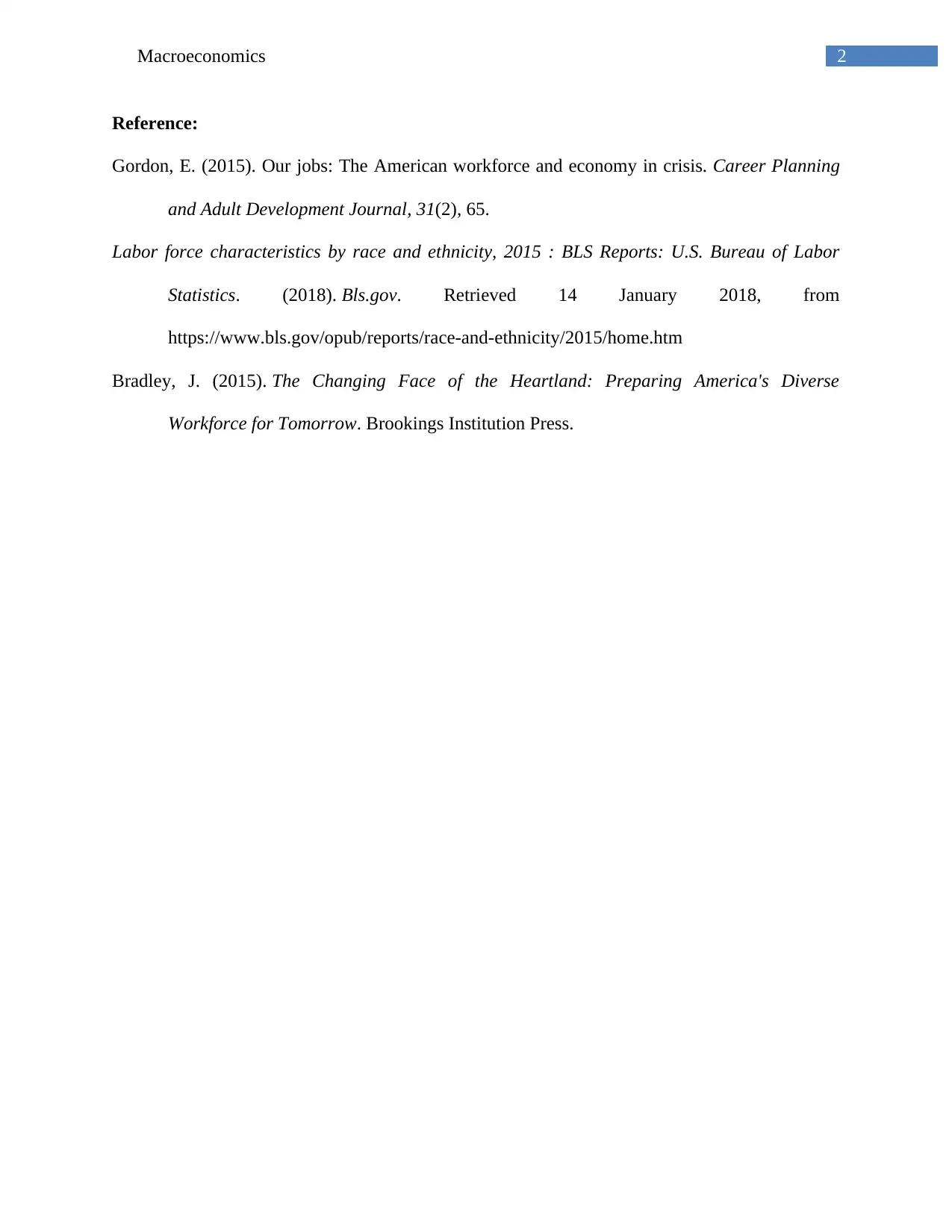Macroeconomics Report: Examining the American Workforce Composition
VerifiedAdded on 2020/05/28
|3
|440
|70
Report
AI Summary
This macroeconomics report provides an analysis of the American workforce, drawing on data from the Bureau of Labor Statistics (BLS). The report highlights key demographic trends, including the racial composition of the workforce, with a focus on the dominance of white Americans and the growing presence of Hispanic and Asian populations. It also examines labor force participation rates across different racial groups, noting the varying levels of participation among different demographics. Furthermore, the report references the "Baby Boomers" theory to suggest potential shifts in the workforce composition by 2044. The analysis provides a comprehensive overview of the current state of the American workforce, offering valuable insights into its dynamics and future trajectory.
1 out of 3





![[object Object]](/_next/static/media/star-bottom.7253800d.svg)